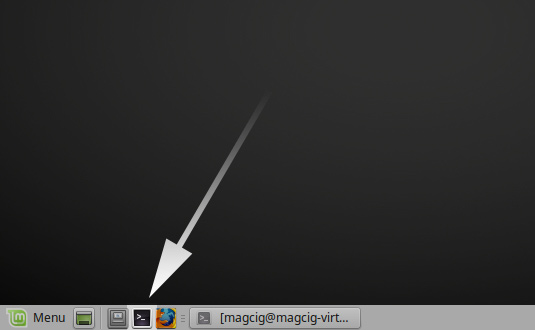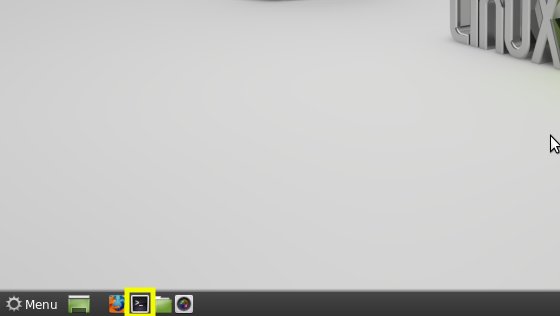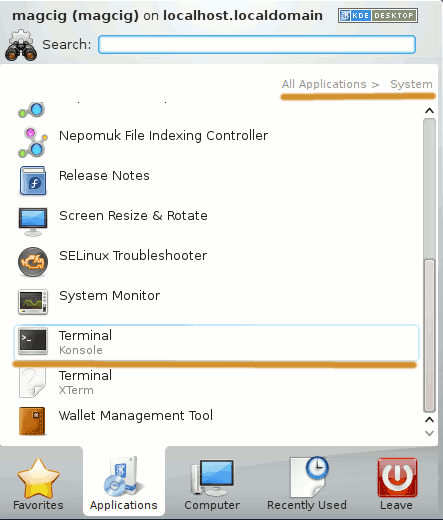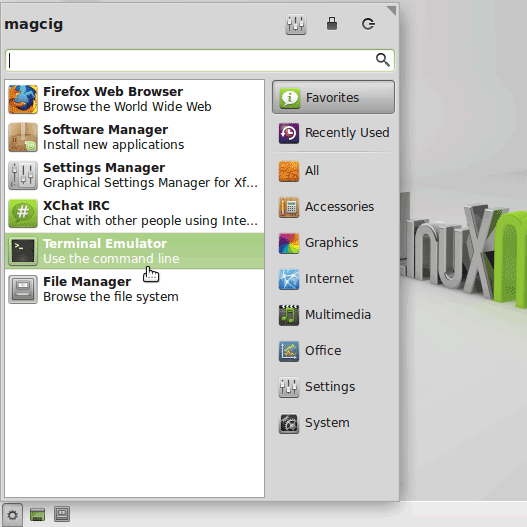Getting Started with Command Line on Mint Linux
The Tutorial shows you How to Quick Start easily with the Command Line / Console / Terminal / Shell on Linux Mint 18 Sarah Mate/Cinnamon/KDE/Xfce desktops.
This is Just a ‘Quick and Dirty’ Introduction to the Command Line by Example on the Console/Terminal Bash Shell emulator.
The Tutorial is Step-by-Step and you Can Just Getting Started Following and Executing each Command without any Harm for your System :)
After all only ‘Practice Makes the Master‘; so Do Not try to Getting Started too Hard but Just ‘Take it Easy!‘ ;)
The Commands are Intended for Execution the Default Bash Linux Shell but Most should Works also for the Bourne, C, TC and Korn Shells…

-
First, Open a Command Line Terminal Console Window
(Press “Enter” to Execute Commands)Mate:

Cinnamon:

KDE:

Xfce:

In case first see: Terminal Quick Start Guide.
-
To List a Directory Content (Directories and Files included)
ls /[path]
For Example to List the Content of the Root Directory:
ls /
Or to List the Content of the Home Directory:
ls $HOME
-
Next practice the Change of Directory
Change to the Root Directory:cd /
[Again find out how “cd” is an Abridgement for “Changing Directory“]
Then Go to /usr/bin:cd /usr/bin
Now to Navigate Back to the Parent use the “..” option.
So non to Return to the Root of the Directory Tree you may play:cd ../..
(It’s like to say: ‘One Step Back and then One Step Back’ again)
Finally, to Return Home is simple as:cd
Then to Verify you are in that Location Use:
pwd
[In this case the “pwd” Command is a Shortcut for “Print Working Directory“]
Hey Congratulations! you achieved the First, Step-by-step Walk into the Linux Directory Tree! :) - The System’s Directory Tree Root: /
- The root User’s Directory: /root
- The root User: the SuperAdmin that can Execute Any Command
-
Again experiment the Creative powers
With a test Directory like:mkdir $HOME/livingroom
[See here again how “mkdir” is an Abbreviation for “Making Directory“].
How you should have already understood, $HOME and ‘~‘ are both synonymous of your’s Home Folder.
And the Home Directory is where your User Contents are Stored by Default.Moreover, to enhance your Memorization and Fun I rightly Use some Metaphoric term. So here you can Immagine a directory like a Room into your Home :)
Try Making Multiple Directories at once with:
mkdir $HOME/bedroom $HOME/bathroom $HOME/garden
Try to use the “ls” Command to Check your creative Work:)
ls ~
Finally, use the ‘touch‘ Command to Make a New Empty File:
touch $HOME/livingroom/box
And how you could already have perceived, in my creative Examples I make use of the following Mnemonic Linking:
-
Directory -> Spatial Entity
-
File -> Thing
And so in the Previous Command to an “Empty File” corresponds a natively “Empty Thing” like a “box”, or otherwise you may take it as a simple Label/Name ;)
-
Especially relevant, about the Shell Terminology, there are 3 different Entities named as “Root”:
Contents